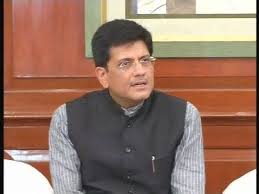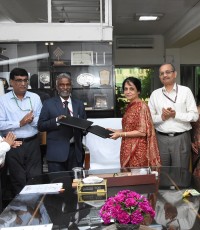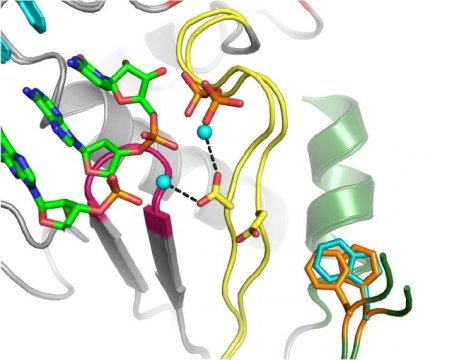The question of non-performing bank loans and mounting pressure on borrowers (to flog assets or otherwise repay) is a well-debated topic. A major foreign publication wrote about it this week. Somehow I found its unflattering vocabulary — commenting on Indian promoters as a class — upsetting; it is, of course, easier to pontificate than look nearer home, where greed and governance issues of professionals yielded much grief to global systems and citizens.
Promoters are entrepreneurs. Collective stigmatisation debates hurt commerce irrationally. Such injury may persist unless the larger ecosystem is confident of principled intent and entrepreneurs will be unfairly attacked, and impeded, as a category.
Basically, in good faith
In my view, all entrepreneurs undertake substantial financial, regulatory and reputation risks in good faith. Contrary to popular opinion, and debates designed to win public fancy, entrepreneurial plans do not cluster around self-enrichment at the cost of others; their basic aim is to earn risk-weighted returns on invested capital (be it owned, raised or borrowed).
Yet, it is true that a small sub-set of Indian business generated the unfortunate reputation. Rather than agonise silently, in its own larger interest business must keep asserting that alleged anomalies of any entrepreneur must be quickly proven and penalised. Innuendo is uncalled for.
In this entire backdrop it is vital to reflect that entrepreneurs (old and new) may simply reduce investing if they feel that business difficulty or failure has the potential to classify them as delinquent, or threaten personal ruin. If legitimate risk-taking by established and/or budding entrepreneurs is subdued, it is not in the nation’s interest. We need to multiply the enterprising spirit drastically.
Borrowers and lenders
A corporate promise to pay its debts cannot occur in a moral vacuum. Individuals executing such a corporate decision in a contract are free from personal liability (unless they otherwise assume it). Nevertheless, the entrepreneur (or controlling entity behind corporate actions) assigning moral accountability to the corporate borrower is in harmony with our values, increases social trust, and safeguards continued availability of lend able funds.
In a pivotal sense the borrower is the custodian of the lender’s funds and therefore has an ethical duty to avoid conduct significantly increasing risks of non-repayment. There are borrowers who repay obligations on time; there are those who face problems and need support to their intent to repay, and those who wilfully renege on contracts. They all merit being treated correspondingly. Lenders have a first task of sound due-diligence and commercial judgement; secondly, a genuine business difficulty does not render a good judgement bad and therefore merits accommodation. Thirdly, the lender must be alert and rigorous on enforcement of its contractual rights in absence of good faith on borrower’s end; delay is fatal and the system cannot lay the blame elsewhere.
Shareholders essentially provide risk capital (whose value can drop to zero) to an enterprise. A lender’s motivation in providing funds and his rights in relation thereof are entirely different.
It is crucial that risks inherent to shareholders (as a whole) and lenders get reflected equitably in real-world outcomes (that is, equity has to take the hardest knock). Once there is fairer allocation of pain, the systemic view on the NPA situation will become more balanced.
Even the best of plans are subject to economic risk or failure. While entrepreneurs must exercise sound stewardship of stakeholder funds, favourable outcomes cannot be taken for granted.
Under intense scrutiny it is easy to overlook that corporate structures exist for genuine purposes. Time-tested principles of limited liability cannot be breached without proper cause. In my view a revisit is required on the model of personal guarantee as collateral for loans, which took root in an era of wobbly governance and centralised entrepreneur control.
Drastic change
The regulatory system has brought a sea change to governance where such central control cannot exist. Therefore extra-constitutional measures such as personal guarantees lose sanctity, only to provide a false sense of comfort to lenders, which in turn often delays contractual action. Much heartburn on both sides has taken place based on guarantees. The potential of confronting liquidation under recent insolvency laws is a deterrent far beyond brittle collateral, and under present governance norms is the correct pillar to rely on.
Much investment has been made across sectors in the past 6-10 years in the hope of strong economic growth. After the global stress and slowdown, markets went south, and businesses lost pricing power (despite a fall in commodity prices). Cash flows would not sustain debt service (especially at high interest rates). Still, banks did attempt to sincerely handhold for a while. But some debt is now unsustainable, particularly in infrastructure, cyclical businesses or in businesses battered by foreign competition (mainly China). So, stresses of non-performing loans are not new; the system’s pain arose on recognition of this predicament in banks’ own accounts. While such theory is logical, the sagacity of comprehensive and forcible cleaning up of legacy pain within a few quarters must be open to debate. One hoped that as problems had persisted for long the regulator would have shaped solutions earlier.
It is useful to recall that in some contracts enforcement was restrained by judicial verdicts; it does no good to either lament this or blame entrepreneurs. It also does not help if the state’s might and plethora of laws/punishments are threatened in contract enforcement complications.
Wait and watch
An entrepreneur will, in good faith, frequently advocate waiting for healthier times to resolve debt problems rather than breaking up or selling a business. A banker convinced of the bonafides of an entrepreneur will try to support for the time he objectively can.
Distress sales have the potential to destroy value and undeservedly deprive stakeholders, more so in a generally guarded investment atmosphere. Let’s remember that assets put on sale now can be a decade or more old. Whether asset sale or management changes will be a panacea, or merely a deferment of problems, is a moot question.
The system frequently generates 3-letter attempts to solutions — CDR, SDR, S4A — but both lender and borrower ends seem to be skirting reality so far. Following the rhetoric now whipped up (media, public, judiciary, government) I feel appropriate or wholly rational decisions on resolution are still some time away. However I am sure that all responsible quarters hold the view that entrepreneurs remain honest as a class, and continue to support and abide by equitable policies.










